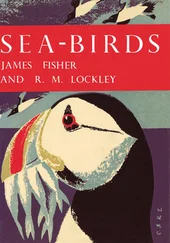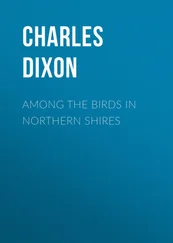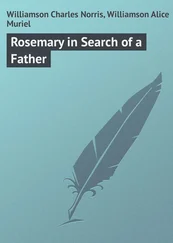Charles Dixon - British Sea Birds
Здесь есть возможность читать онлайн «Charles Dixon - British Sea Birds» — ознакомительный отрывок электронной книги совершенно бесплатно, а после прочтения отрывка купить полную версию. В некоторых случаях можно слушать аудио, скачать через торрент в формате fb2 и присутствует краткое содержание. Жанр: foreign_antique, foreign_prose, на английском языке. Описание произведения, (предисловие) а так же отзывы посетителей доступны на портале библиотеки ЛибКат.
- Название:British Sea Birds
- Автор:
- Жанр:
- Год:неизвестен
- ISBN:нет данных
- Рейтинг книги:3 / 5. Голосов: 1
-
Избранное:Добавить в избранное
- Отзывы:
-
Ваша оценка:
- 60
- 1
- 2
- 3
- 4
- 5
British Sea Birds: краткое содержание, описание и аннотация
Предлагаем к чтению аннотацию, описание, краткое содержание или предисловие (зависит от того, что написал сам автор книги «British Sea Birds»). Если вы не нашли необходимую информацию о книге — напишите в комментариях, мы постараемся отыскать её.
British Sea Birds — читать онлайн ознакомительный отрывок
Ниже представлен текст книги, разбитый по страницам. Система сохранения места последней прочитанной страницы, позволяет с удобством читать онлайн бесплатно книгу «British Sea Birds», без необходимости каждый раз заново искать на чём Вы остановились. Поставьте закладку, и сможете в любой момент перейти на страницу, на которой закончили чтение.
Интервал:
Закладка:
The Common Tern is rather a late breeder, its eggs not being laid until the end of May or early in June. It breeds in companies of varying size, the suitability of the site being in some measure a determining cause. This Tern is equally capricious in the site selected for the nests; sometimes one spot is chosen, sometimes another; but there can be little doubt that the bird pairs for life, and evinces considerable attachment for its accustomed haunts. I have found almost invariably that the Common Tern habitually lays its eggs farther from the water than the Arctic Tern, and always prefers to conceal them amongst vegetation of some kind. Islands are always preferred to the mainland, doubtless because of their greater safety. We cannot class this bird as an elaborate nest builder, a mere hollow, scantily lined with a little withered grass or weeds, being the only provision. The two or three eggs vary from buff to grayish-brown in ground colour, blotched and spotted with several shades of rich brown and gray. But one brood is reared, and as soon as the young are strong upon the wing, the nesting places are deserted, and the movement south begins.
Terns migrate leisurely in autumn, often remaining a day or so here and there, on and off the coast, and are then seen in localities which they never frequent during summer.
This Tern, widely known to systematists as the Sterna arctica of Temminck, was unaccountably confused with the preceding species, until the German naturalist, Naumann, appears first to have pointed out their specific distinctness. The Arctic Tern is par excellence the Tern of our northern coasts, say from the Farne Islands and Lancashire onwards to the Orkneys and the Shetlands. I am not aware that it breeds anywhere on the English coast between Spurn and the Scilly Islands, but there are a few scattered colonies on the west coast of England and Wales. This pretty Tern may be distinguished from its near ally, the Common Tern (which it closely resembles in size and general appearance), by its grayer under parts and perceptibly longer outermost tail feathers. Like all its congeners, the Arctic Tern is a summer migrant to the British seas and coasts, arriving from the south late in April or early in May. It prefers very similar haunts to those of the preceding species – low rocky islands with sandy or shingly beaches, and with a fair amount of grass and other marine vegetation upon them. It is equally gregarious in its habits, breeding in colonies, and returning regularly to certain districts to rear its young. Its slenderer form, and proportionately longer wings and tail, make it even more elegant looking in the air than its congener. It catches its food in the same Hawk-like or Gannet-like manner, pouncing down into the water and seizing the tiny fish as they swim near the surface. No Tern dives, and it is certainly exceptional for the bird completely to immerse itself; usually it flutters on the surface for a moment, then rises again. Small fish and crustaceans form the principal food of this species. Its note is very similar to that of the preceding Tern – a shrill and monotonous krick , often prolonged into two syllables.
The nesting season of this Tern begins in June, and fresh eggs may be found throughout that month. Rocky islands seem everywhere to be preferred for nesting places, and the same habit of changing the exact hatching ground prevails in this as in the preceding species. The Farne Islands are, or used to be, a great breeding station of the Arctic Tern, and there I have taken great numbers of its eggs. The bird probably pairs for life. It differs somewhat in its nesting arrangements from the Common Tern, inasmuch that it never makes any nest. No lining of any kind is placed in the hollow which contains the eggs, and this hollow is generally selected ready made. Another peculiarity is that the eggs are far more generally laid nearer to the water; and this applies not only to the Farne Islands, but to every breeding place of this Tern that I have visited. The two or three eggs are laid in any little depression in the coarse sand or shingle on the line of drift, or amongst small pebbles, or even on the bare ground or rock. These eggs vary from buff to olive, and even pale bluish-green in ground colour, heavily blotched and spotted, especially at the larger end, with dark brown, paler brown, and gray. They are decidedly smaller than those of the Common Tern, more elongated in shape, and are much more olive in general colour. When disturbed from their eggs the Arctic Terns become very noisy, and rise in fluttering crowds above the sacred spot, continuing to fly to and fro, screaming anxiously until the intruder retires.
It is with some hesitation that I include this species, the Sterna dougalli of Montagu, in the present work, because if it really does visit our coasts now to breed, it is so exceedingly rare and local, that any ordinary observer of bird life by the sea could scarcely hope to meet with it. It is interesting to remark that the Roseate Tern was first made known to science from a skin that was sent to Montagu, from the Cumbrae Islands, in the Firth of Clyde. It was subsequently found breeding on the Farne Islands by Selby; it formerly bred on the Scilly Islands, as well as on Foulney and Walney; but so far as I can ascertain there is no direct evidence that it breeds at any of these places now. It may be distinguished from the Common Tern by its rosy under plumage; but as this is very apt to fade, a still more infallible distinction, according to Mr. Saunders, is the white inner margin to the primaries.
The Roseate Tern is a very late migrant, not reaching its breeding places until towards the end of May. In its flight and habits generally, it very closely resembles those of the preceding species; but its note is hoarser than that of the Common Tern. The favourite breeding grounds of this Tern appear to be low rocky islets and – so far as our islands are concerned – it is partial to nesting among a larger colony of Arctic or Common Terns. It does not appear to make any nest, but deposits its two or three eggs on the bare ground, usually in a little hollow amongst the shingle. These eggs very closely resemble those of the Common Tern; so closely in fact that no reliable means of distinguishing them can be given.
This species ( Sterna minuta ) is by far the smallest of the Terns that visit the British coasts in summer to breed. It cannot be said to be anywhere common, and its breeding stations are few and far between. Curiously enough, it is not known to breed on that great resort of British sea fowl, the Farne Islands. There can be no doubt that this Tern is slowly becoming rarer, and in view of this fact I do not feel justified in assisting its extermination, by naming a single locality known to me where it now breeds. The bird-loving reader will, I am sure, appreciate this reticence. Small colonies of this pretty Tern are situated here and there round the British coasts, and in one or two more inland localities. The partiality of the Lesser Tern for the coast of the mainland, rather than for islands, as a nesting ground, contributes largely to the decrease in its numbers. It arrives on our coasts in May, and is readily distinguished from all its congeners by its small size. In its habits it is certainly gregarious, but nowhere are its gatherings as extensive as in the other common British species. Like its congeners it is eminently a bird of the air, flying up and down in restless uncertain flight, living almost entirely on the wing during the daytime, only seeking the sands or the sea to sleep or to rest. It may be watched flying along the coast, a short distance from land, in a slow irregular way, every now and then poising for a second, and then dropping into the water with a tiny splash to seize a fish or a crustacean. Its note is not quite so harsh as that of the larger species, and may be described as a shrill pirr , most frequently uttered when its breeding places are invaded. Its food is composed of small fish, insects, sand-lice, and crustaceans, most of which is secured whilst the bird is on the wing.
Читать дальшеИнтервал:
Закладка:
Похожие книги на «British Sea Birds»
Представляем Вашему вниманию похожие книги на «British Sea Birds» списком для выбора. Мы отобрали схожую по названию и смыслу литературу в надежде предоставить читателям больше вариантов отыскать новые, интересные, ещё непрочитанные произведения.
Обсуждение, отзывы о книге «British Sea Birds» и просто собственные мнения читателей. Оставьте ваши комментарии, напишите, что Вы думаете о произведении, его смысле или главных героях. Укажите что конкретно понравилось, а что нет, и почему Вы так считаете.












